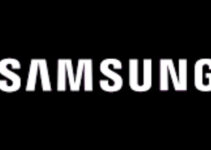Apple Inc. is a smartphone manufacturing and premium technology American multinational corporation. Steve Jobs, Ronald Wayne, and Steve Wozniak founded the tech company in 1976. Today, we’ll discuss the value chain analysis of Apple; primary and supporting activities in the process of value chain analysis. They’re inbound and outbound logistics, operations, marketing and sales, services; infrastructure, HRM, technology, and procurement as an application of value chain analysis company example.
Substitutes of Apple
- Samsung
- Amazon
- One Plus
- Huawei
- Xiaomi
- Lenovo
- Microsoft
- IBM
The value chain analysis of Apple would analyze the primary and supporting activities involved in the process of value chain analysis; inbound and outbound logistics, operations, marketing, services; infrastructure, technology, HRM, and procurement. Here’s the Apple value chain analysis company example as follows;
Value Chain Analysis of Apple
Let’s discuss the primary and supporting activities involved in the process of value chain analysis of Apple. It is an application of value chain analysis based on Porter’s model; some of the key elements and components of value chain analysis are as follows;
Primary Activities of Apple
Some of the key elements and components involved in the primary activities of Apple value chain analysis process are as follows;
Inbound Logistics of Apple
The inbound logistics outlines the inward flow and receiving raw supplies and materials from the suppliers and vendors for production and manufacturing. The tech giant company Apple deals with hundreds of suppliers across the world to ensure the smooth supply of materials and supplies and decrease risk factors.
I-Large Supply Chain Network
The supply chain network of Apple is comprised of hundreds of suppliers in over 52 countries worldwide; the supplier partners have employed over 3 million employees. According to an estimate, the company completes the sourcing and procuring of material process in roundabout in 150 days
When Tim Cook came to power of Apple Corporation in 2011, he decreased the supply chain network and warehouses to a great extent. His focus was on building relationships with contract manufacturers, rather than the long-term relationship which is far more expensive.
II-Sourcing
It is no doubt Apple deals with hundreds of suppliers and vendors across the globe. Some of the top sourcing countries of Apple are as follows;
- USA
- China
- Europe
- Other Asian countries
III- Scale & High Bargaining Power
The efficient supply chain practices and strategies of Apple have a benchmark and standards for businesses and companies across the world. The mass scale and scope of Apple’s business operations lead the company towards economies of scale. However, the company has significant bargaining power while negotiating terms and conditions.
Outbound Logistics of Apple
I-Warehousing & Distribution
The outbound logistics of Apple comprises warehousing and distribution of finished goods of the company; Mac Computers, iPhones, iPads, and other tech devices. The inventory depreciation rate of technology products is very high due to the speedy technological development and limited product life cycle. However, the focus of the tech brand is to maintain limited inventory in its warehouses.
II-Retail Stores
Apple delivers its finished products to its branded retail stores and usually their location is in the highly crowded area. While shipping and transporting, the top priority of the company is to ensure safe shipment. The company also ensures the safe delivery to the retailers, wholesalers, and warehouses.
III-E-commerce
E-commerce platforms and online stores are a more cost-efficient option than Apple Retail Stores; they allow the company to directly approach the customers and cut off all intermediaries. In fact, Apple’s e-commerce is the 3rd largest retailer in the US in terms of business size.
IV-Market Penetration
Apple has successfully implemented the market penetration strategy as a part of its outbound logistics ventures. It helped the company to enter the Asian and Chinese markets, and it doesn’t include all other costs and expenses. The company could transfer the cost-efficiency advantage to the customers and increase its product demand in the market.
Operations of Apple
I-Outsourcing Production Work
Apple outsources almost all of its production and manufacturing operations to other developing countries like China. The outsourcing strategic approach provides a unique cost-efficient advantage; the company could shift its focus on product designing and research and development processes.
II-Operational Areas
Apple has segmented its operations into various geographical regions and areas; they’re as follows;
- America – North and South American Market; sales reached 169.65 billion USD in 2022 with a growth rate of 11%
- Europe – includes India, Middle East, Africa, and European countries; earned 95.12 billion USD from this segment
- China – comprised of Taiwan, Hong Kong, and China; earned revenue of 74.2 billion USD in 2022 with a growth rate of 9%
- Japan – sales in the Japanese market are decreasing
- Asia Pacific – earned revenue of 29.38 billion USD with a growth rate of 11%
Marketing and Sales of Apple
I-Multiple Sales Channel
Apple is the world’s leading tech giant premium multinational brand. The company employs various direct and indirect distribution channels and mediums to amplify its sales and approach the end consumers. It has allowed the company to increase its sales and revenue significantly over the years. Some of the main channels that the company employs to sell its products and services are as follows;
- Value added resellers
- Retailers
- Wholesalers
- 3rd party cellular network carriers
- Direct sales force
- Apple online store
- Apple retail store
Services of Apple
I-Quality Customer Service
The focus of tech giant company Apple is to offer top-quality customer service. The company’s customer service comprises three stages;
- Pre-purchase
- During the purchase
- Post-purchase
In order to provide a user experience for its products and services, Apple has opened up its brand retail stores in various countries across the world. The company has employed young and tech-savvy sales assistants at its stores to guide visitors and customers.
II-Trade-in Program
In the post-purchase customer service, the company has launched a trade-in service program. It allows iPhone users to buy the new and latest iPhone models by giving their old model with additional payment to the company. The company also allows them to return their Apple product within two weeks.
III-Apple Store
Apple Stores are a great place to visit when customers are planning to buy Apple products. They offer a variety of services like repairing and maintenance of their damaged iPhones.
Supporting Activities of Apple
Some of the key elements and components involved in the supporting activities of Apple value chain analysis process are as follows;
Infrastructure of Apple
Apple has developed a well-organized infrastructure and it helps the company to smoothly operate and function its business. It outlines critical planning, productivity, and efficiency to facilitate its value chain processes. Some of the key management components of the company’s infrastructure are as follows;
- Government activities
- Quality management
- Legal
- Accounting
- Planning
- Development strategies
HRM of Apple
Human resource management plays a key role in the operational growth of the tech company Apple. The company offers benefits, incentives, and market-competitive salaries, and regularly conducts training programs to update its employees’ skills and expertise. However, some of the key functions of Apple’s HRM unit are as follows;
- Allocating roles and responsibilities
- Talent management
- Increasing the productivity of employees
Technological Development of Apple
Apple invests billions of dollars in research and development to innovate the latest technology in order to gain a competitive edge in the market. In fact, the company has earned a reputation for pioneering technology in the tech industry. The objective of the latest technological development is to offer innovative features and a better customer experience.
Procurement of Apple
Apple builds a very good relationship with its suppliers and it helps the company to ensure the smooth supply of raw supplies and materials. In fact, it is mutually beneficial to the company and suppliers in the long term.
Conclusion: Apple Value Chain Analysis Company Examples | Apple of Value Chain Analysis Process
After an in-depth study of the value chain analysis of Apple; we have realized that Apple is the world’s leading technology company. If you are the Apple value chain analysis company example; then you should keep in mind the abovementioned primary and supporting activities involved in the process of value chain analysis. They’re inbound and outbound logistics, operations, marketing, services; infrastructure, technology, procurement, and HRM as an application of value chain analysis.
Ahsan is an accomplished researcher and has a deep insight in worldly life affairs. He goes Live 3 days a week on various social media platforms. Other than research writing, he’s a very interesting person.


